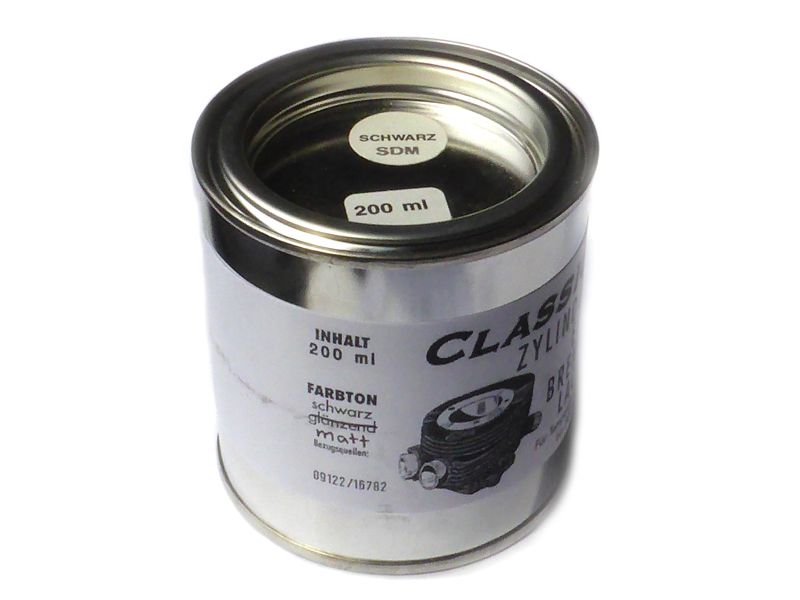Cylinder black with part nr. 09122
For temperatures up to 500 °C continuous use and up to 700 °C with impact load
200 ml is sufficient for 2 to 3 large cylinders.
Ideal for spraying and painting engine cylinders, exhaust systems and other metal objects subject to high heat. Classic cylinder lacquer is initially thermoplastic; in other words although it is air-drying, it becomes sticky even with moderate heat, expands and hardens again when it cools down. This process is repeated as long as the polymerization temperature is not reached. The lacquer must be heated at least once to 150-180 °C to finally cure. After cooling, the paint layer has permanently cured and it withstands the highest thermal stress.
Application:
the surface to be painted must be absolutely free of grease, rust and dirt. Best durability is achieved on blasted surfaces.
Pre-treatment by blasting with glass beads or glass powder as well as quartz sand, is strongly discouraged: silicate compounds will adhere to the surface which strongly affects the paint adhesion. Please use Blast Furnace Slag, Corundum or similar.
No primer is required and the paint does not have to be diluted. To clean the paint gun or brush, we recommend a universal thinner
Note: after application, the drying time is several hours at room temperature (preferably 1 day drying time).
Thereafter, first heat the part moderately, then slowly raise the temperature to 150 – 180 °C.
This can be done by means of an oven, hot air blower/hair dryer or even while driving. If needed, the lacquer can be wet sanded, repainted and heated/burnt in again.
Be careful with engine cylinders and exhaust systems that are burnt in while driving: if heated too quickly, bubbles may form in the paint layer. The baking process does not have to be done immediately; it can be delayed with a few days or even weeks.
Painting of aluminum and galvanized components:
The paint has been specially developed for coating grey cast iron parts. However, it is also possible to paint some aluminum alloys with the appropriate pretreatment. It is strongly recommended to carry out preliminary tests. Lacquer adhesion to chrome-plated, nickel-plated or galvanized parts is generally inadequate.
Note: good results can only be achieved by strict adherence to these instructions.

